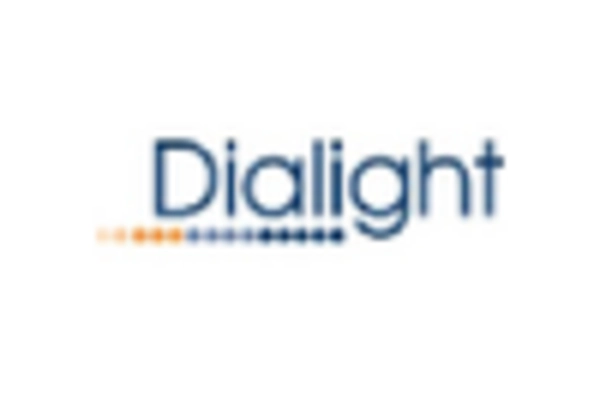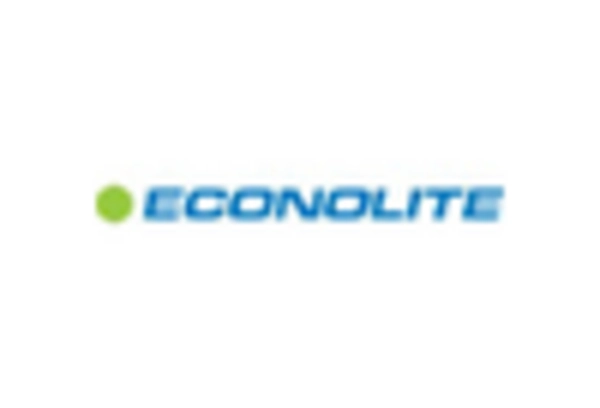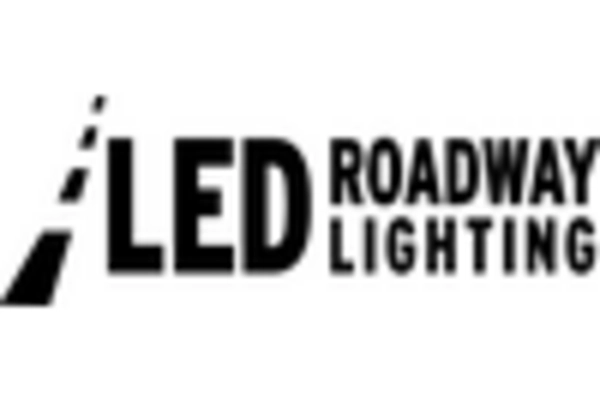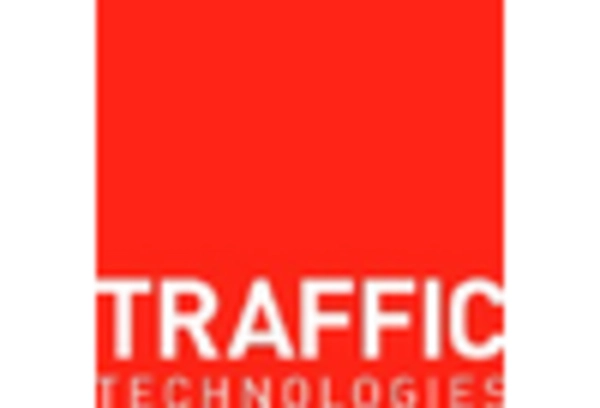Public Awareness and Safety Concerns
Public awareness regarding road safety and the effectiveness of traffic management systems is influencing the Light Emitting Diode Traffic Signs And Signals Market. As communities become more informed about the benefits of LED traffic signs and signals, there is a growing demand for their implementation. Studies indicate that LED signals can reduce accidents by improving visibility and response times for drivers. This heightened awareness is prompting local governments and transportation agencies to prioritize the installation of LED systems. Consequently, the focus on public safety is expected to drive market growth, as stakeholders recognize the advantages of adopting advanced traffic management technologies.
Government Initiatives and Regulations
Government initiatives aimed at improving road safety and traffic management are playing a pivotal role in the Light Emitting Diode Traffic Signs And Signals Market. Various regulatory bodies are implementing standards that encourage the use of LED technology in traffic signage and signals. For instance, many regions have established guidelines that mandate the transition to LED systems for new installations. This regulatory push not only enhances visibility and safety for drivers and pedestrians but also stimulates market growth. The financial incentives provided by governments for upgrading to LED systems further bolster this trend, indicating a robust future for the industry.
Increased Demand for Energy Efficiency
The Light Emitting Diode Traffic Signs And Signals Market is experiencing a surge in demand for energy-efficient solutions. As municipalities and transportation authorities seek to reduce operational costs, LED traffic signs and signals present a compelling alternative to traditional incandescent and fluorescent lighting. LEDs consume significantly less energy, which not only lowers electricity bills but also contributes to reduced carbon emissions. According to recent data, LED traffic signals can save up to 80% in energy consumption compared to conventional options. This growing emphasis on energy efficiency is likely to drive the adoption of LED technology in traffic management systems, thereby enhancing the overall market landscape.
Technological Innovations in LED Systems
Technological innovations are significantly shaping the Light Emitting Diode Traffic Signs And Signals Market. Advancements in LED technology, such as improved brightness, longer lifespan, and enhanced color rendering, are making these systems more appealing to municipalities. The integration of smart technologies, including sensors and connectivity features, allows for real-time traffic management and adaptive signaling. This evolution in technology is expected to enhance the functionality and efficiency of traffic systems. Market data suggests that the introduction of smart LED traffic signals could lead to a reduction in traffic congestion by up to 30%, thereby driving further investment in this sector.
Growing Urbanization and Traffic Congestion
The rapid pace of urbanization is contributing to increased traffic congestion, which in turn is propelling the Light Emitting Diode Traffic Signs And Signals Market. As urban populations swell, the demand for effective traffic management solutions becomes more pressing. LED traffic signs and signals offer a reliable means to enhance traffic flow and improve safety in densely populated areas. The ability of LED systems to provide clear and visible information to drivers, even in adverse weather conditions, is particularly valuable in urban settings. This trend suggests that as cities continue to grow, the reliance on LED technology for traffic management will likely intensify.

















Leave a Comment